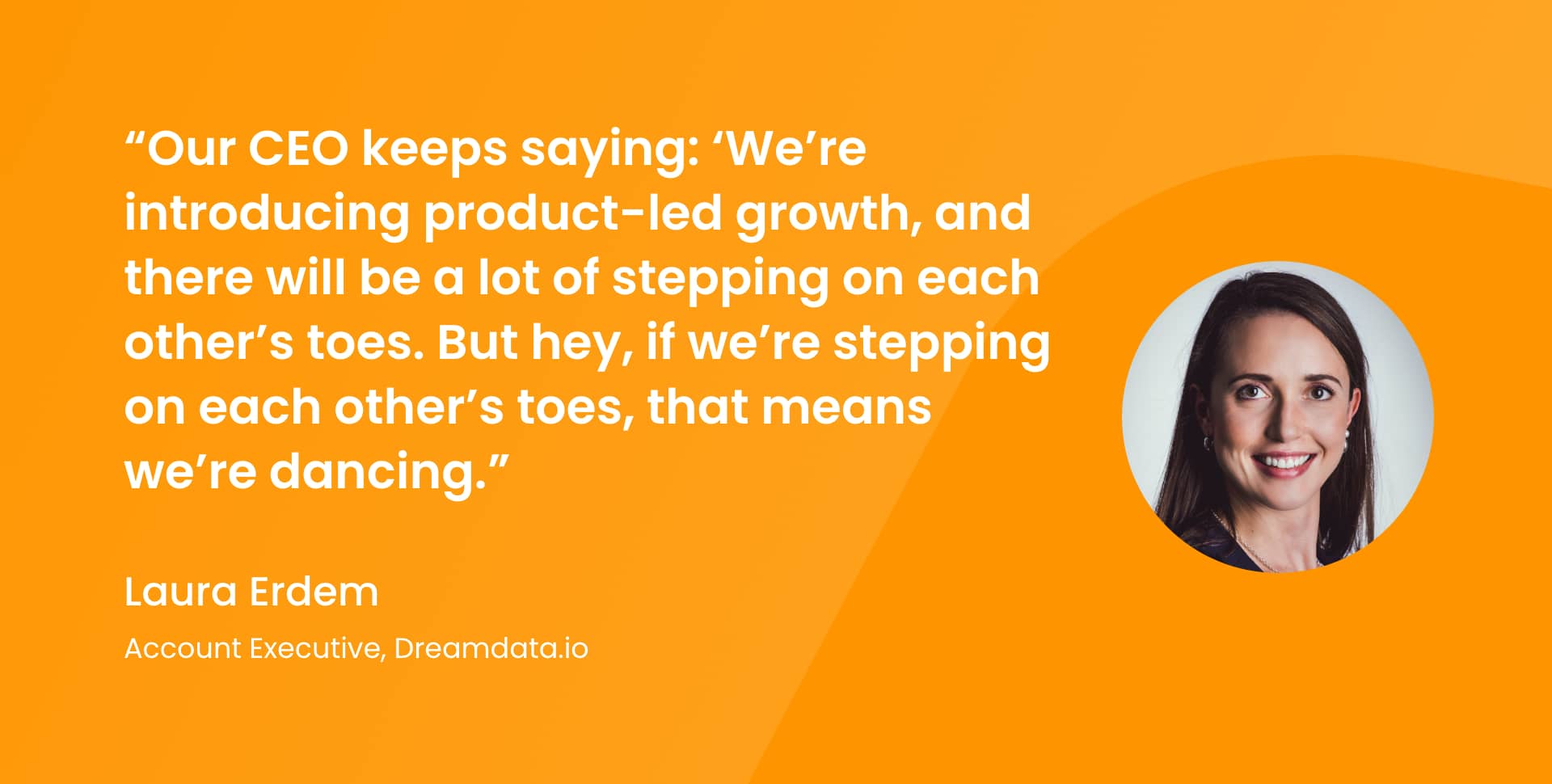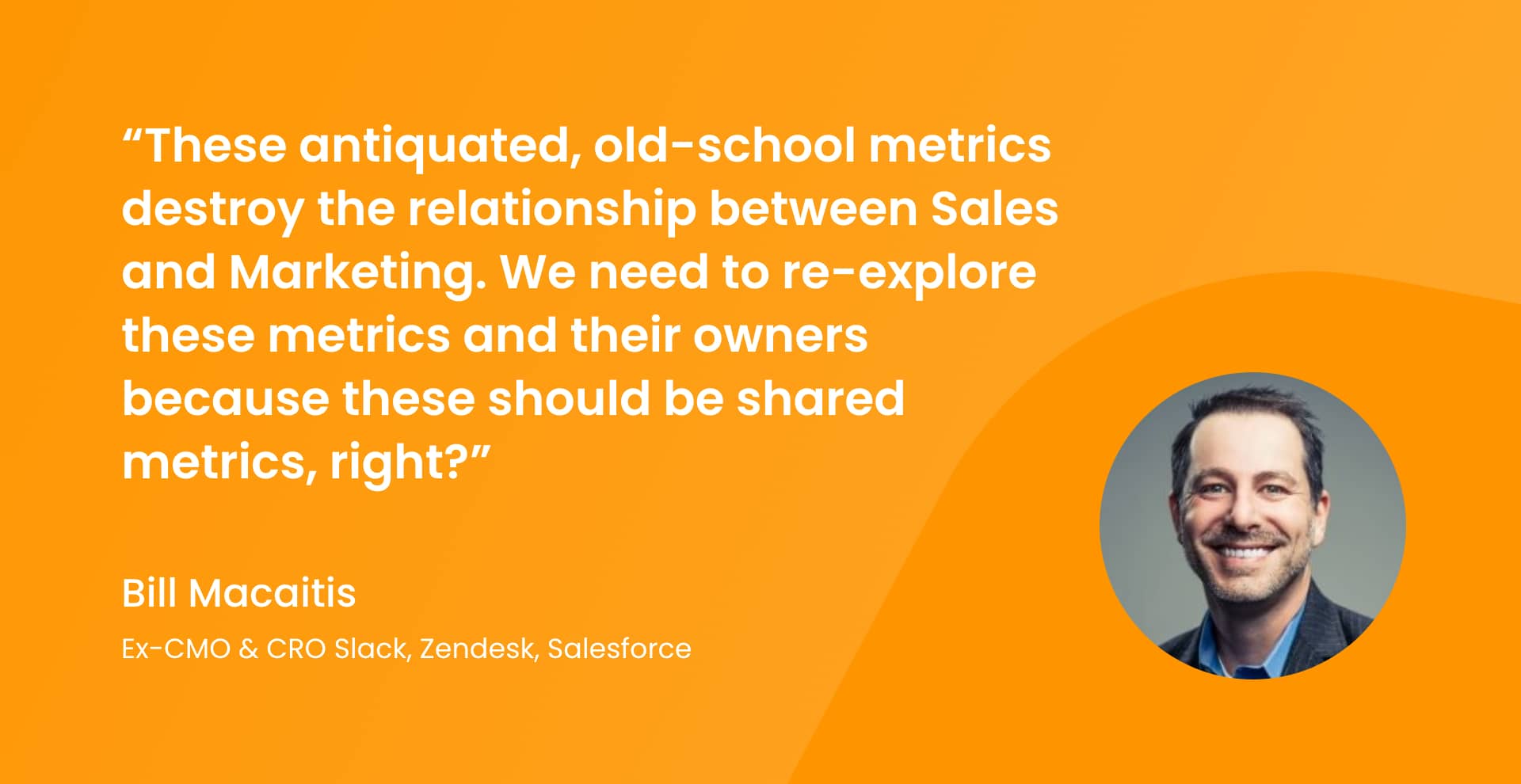Even though it might be pretty challenging to get started with it, effective team collaboration is essential to the success of any business.
Businesses often fail to improve their results because their teams don’t align, and they blame each other for poor performance.
Sales teams often express frustration at not being more involved in the process of prioritizing what product or feature to work on next. They know the customers best, so they should be involved in these decisions, right?
The marketing department also focuses on securing business and helping the company grow.
So does the customer service team.
And basically, every other team in the company is working towards the same goal, but there’s a significant difference in how they do it.
According to a 2020 report by LinkedIn, 87% of sales and marketing leaders agree that collaboration between teams enables critical business growth.
Teamwork makes finding common strategies to resolve issues and improve results easier.
In this blog post, we'll share three ways you can nurture a culture of collaboration.

Align your teams and incentivize working together
Laura Erdem (Account Executive at dreamdata.io) comes from a product-led growth background. Product-led growth is a go-to-market strategy that relies on the product itself as the primary driver of customer acquisition, conversion, and expansion.
Sales, Customer Success, and Marketing join forces with Product, supporting the experience while Product is leading the way.
Customer acquisition looks different from traditional sales-led organizations. The clients are ready in the funnel, building trust not only with the salesperson but also with the product itself and practically everyone who’s been involved in working with the product.
In the modern reality of SaaS, how you sell and how you build the product is a constant development.
Both marketing and sales are responsible for guiding the prospects to see what value they will get during a free trial.
Customer success also needs to align and help them feel successful.
As soon as the customer receives value and achieves that first small success, you’ll be able to help them buy the product because it can’t be free forever. If you want a good product, you have to pay for it.

Bill Macaitis, former CMO at Slack, believes in product-led growth because people spend the most time in the product. At Slack, they had a shared goal of daily active users (DAU), which helped align the teams and work together towards the same goal.
For example, Marketing spends a lot of time in the product to make it more fun and delightful for the users. If they only had a goal of MQLs, they would never spend time in the product since that wouldn’t be beneficial for them.
Laura Leap (Senior Account Executive, Samsara) experiences a supportive and collaborative work environment. Everyone’s helping each other to benefit the greater good, and best practices are shared.
It’s way easier to hit quota if you can learn from other people’s successes and mistakes, and it’s also benefitting the company.

Bridge the gap between Sales, Marketing and Product
Macaitis points out that CEOs and boards often assign different metrics for each team.
Most of the time, Sales gets the end revenue numbers, and Marketing gets the lead numbers. This setup suggests that Sales is the only one responsible for generating revenue, while Marketing is responsible for generating interest.
Maybe that worked a long time ago when the only way people found out about you was by running ads, and the only way you bought was through a salesperson.
But this model is completely broken today.

In SaaS, you’ll see a lot of different sources that generate interest in your company.
The experience buyers have with Support might be a big one.
If they’ve received incredible support, they’ll buy more from you.
Or the opposite, if you’ve been on hold for seven hours, they’ll never pay for your services again. Perhaps they’ve had an outstanding sales experience, and they’ll tell other people about your company.
Sales + Marketing = two sides of the same coin
Whose responsibility is to educate the buyer? Sales or marketing?
Persuasion and sales expert Moeed Amin argues it’s both: marketing and sales are two sides of the same commercial coin since they contribute to the same outcome.
Marketing may have many insights into your buyers, and a big part of their job is to educate those buyers.
But if salespeople don’t know what marketing is up to, it’s hard to add value to their conversations and vice versa.
However, salespeople must get familiar with their audience and process.
As a salesperson, you need to show the prospects that you know something about them or their company. The marketing department won’t be able to help you with that.
Salespeople have direct interactions with prospects and customers all the time, so they should inform marketing about their discoveries. They’re both responsible for gathering customer insights and managing how that’s distributed in the different parts of the business.
In a best-case scenario, sales and marketing are led by the same leader and share the same goals and metrics. They have a crystal clear understanding of who the ideal customer profile is. They share information regularly about what they see in the market and what they’re experiencing.




